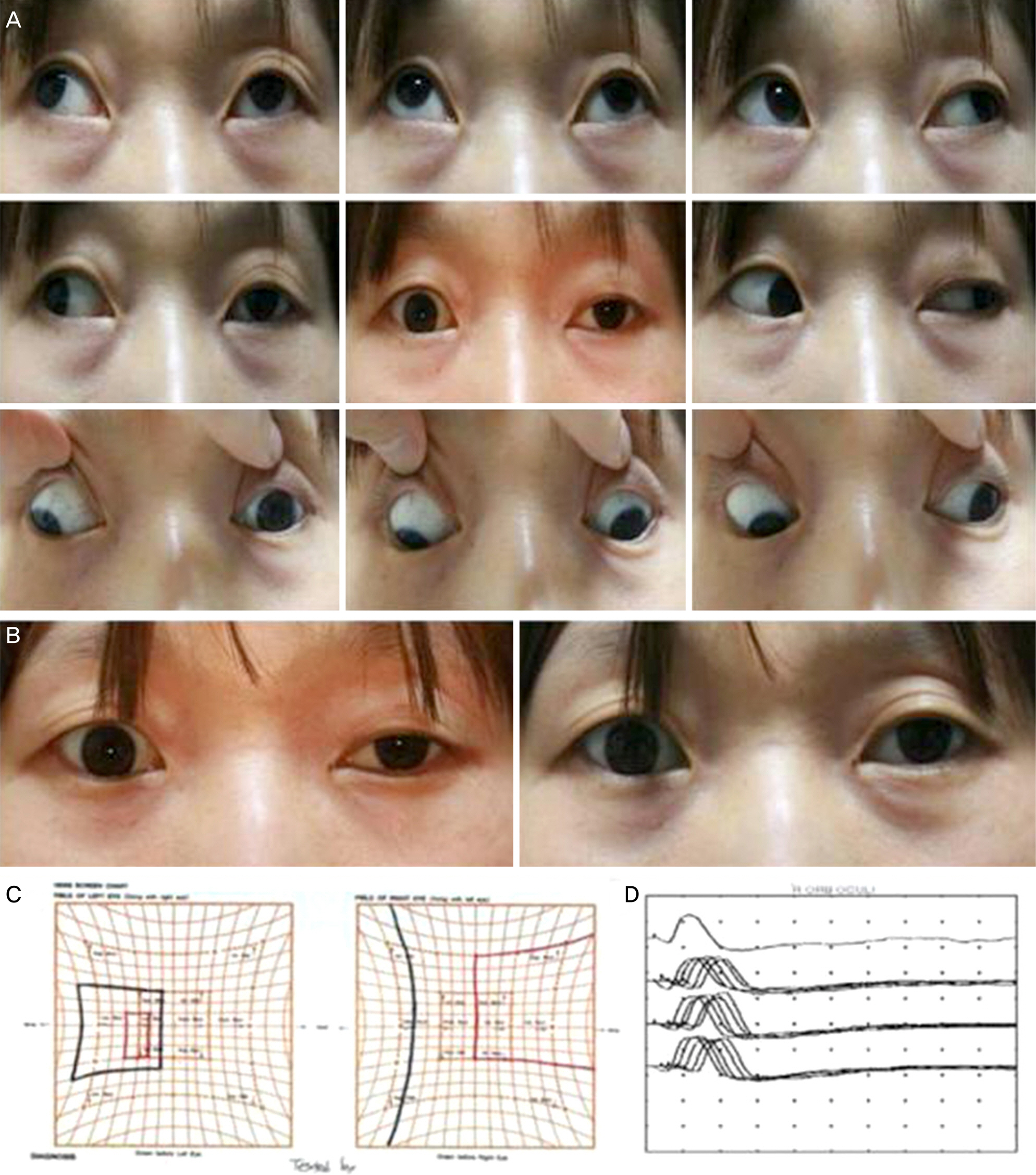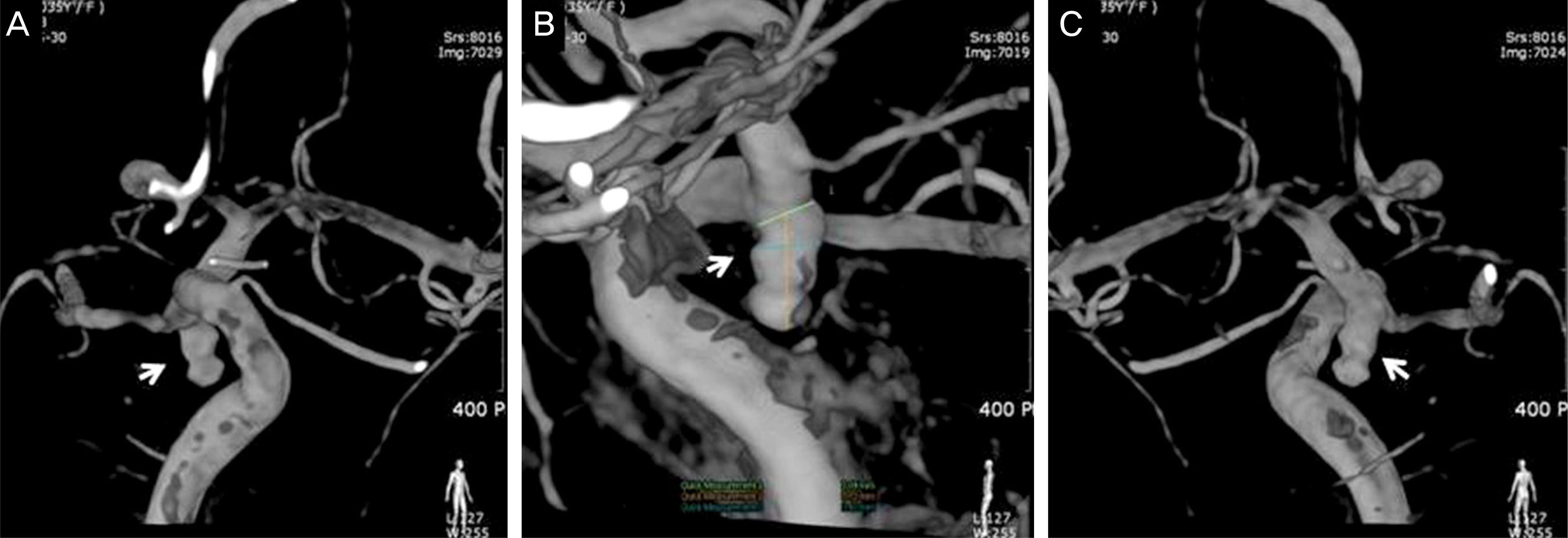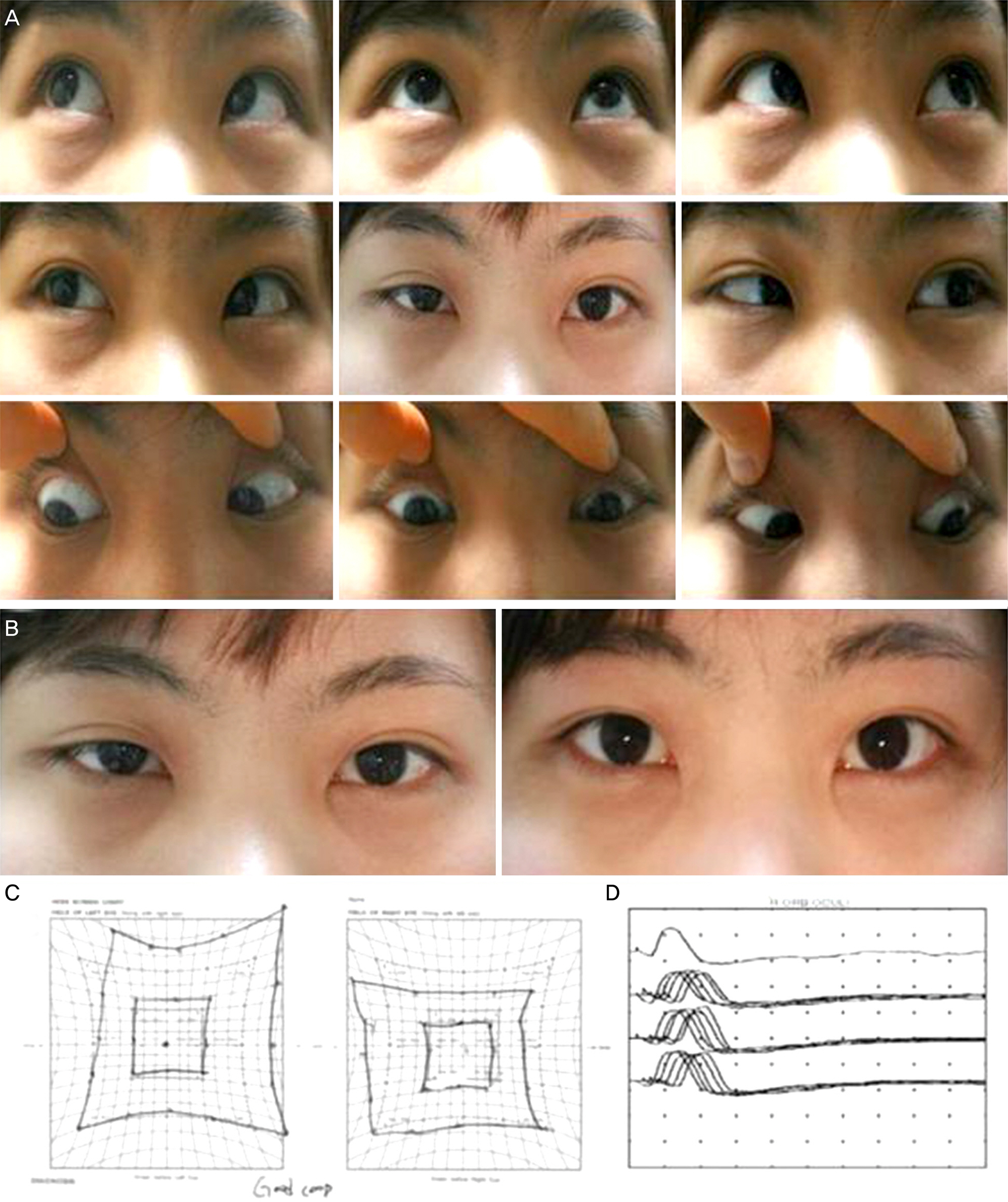J Korean Ophthalmol Soc.
2015 Feb;56(2):309-315. 10.3341/jkos.2015.56.2.309.
Two Cases with Positive Ice Tests Mimicking Ocular Myasthenia Gravis
- Affiliations
-
- 1Department of Ophthalmology, Ajou University School of Medicine, Suwon, Korea. mingming8@naver.com
- KMID: 2216020
- DOI: http://doi.org/10.3341/jkos.2015.56.2.309
Abstract
- PURPOSE
To report two patients with positive ice tests who had diplopia and blepharoptosis caused by something other than ocular myasthenia gravis.
CASE SUMMARY
A 35-year-old female presented with a one-week history of inability to adduct the left eye and left blepharoptosis. Although the ice test was positive, serum anti-acetylcholine receptor binding antibody and the repetitive nerve stimulation test were negative. Brain angiography showed an aneurysm of the left posterior communicating artery, leading to the diagnosis of left pupil-sparing oculomotor nerve palsy. A 25-year-old female presented with an 8-month history of intermittent horizontal diplopia and blepharoptosis in the right eye. The ice test was positive, however serum anti-acetylcholine receptor binding antibody and the repetitive nerve stimulation test were negative. Anti-nuclear antibody was positive (titer 1:160).
CONCLUSIONS
The ice test is a useful screening test for myasthenia gravis. However, a series of differential diagnoses including blepharoptosis and ocular motility disorder should be considered because these conditions also show a positive result in the ice test.
MeSH Terms
Figure
Reference
-
References
1. Elrod RD, Weinberg DA. Ocular myasthenia gravis. Ophthalmol Clin North Am. 2004; 17:275–309. v.
Article2. Barton JJ, Fouladvand M. Ocular aspects of myasthenia gravis. Semin Neurol. 2000; 20:7–20.
Article3. Benatar M. A systematic review of diagnostic studies in myasthenia gravis. Neuromuscul Disord. 2006; 16:459–67.
Article4. Golnik KC, Pena R, Lee AG, Eggenberger ER. An ice test for the diagnosis of myasthenia gravis. Ophthalmology. 1999; 106:1282–6.
Article5. Fakiri MO, Tavy DL, Hama-Amin AD, Wirtz PW. Accuracy of the ice test in the diagnosis of myasthenia gravis in patients with ptosis. Muscle Nerve. 2013; 48:902–4.
Article6. Chatzistefanou KI, Kouris T, Iliakis E. . The ice pack test in the differential diagnosis of myasthenic diplopia. Ophthalmology. 2009; 116:2236–43.
Article7. Vincent A, Newsom-Davis J. Acetylcholine receptor antibody as a diagnostic test for myasthenia gravis: results in 153 validated cases and 2967 diagnostic assays. J Neurol Neurosurg Psychiatry. 1985; 48:1246–52.
Article8. Hong YH, Kwon SB, Kim BJ. . Prognosis of ocular myasthenia in Korea: a retrospective multicenter analysis of 202 patients. J Neurol Sci. 2008; 273:10–4.
Article9. Costa J, Evangelista T, Conceição I, de Carvalho M. Repetitive nerve stimulation in myasthenia gravis--relative sensitivity of different muscles. Clin Neurophysiol. 2004; 115:2776–82.
Article10. Hwang SJ, Lee TS, Park BW. The usefulness of ice test for diagnosis of myasthenia gravis in patients with ptosis. J Korean Ophthalmol Soc. 2005; 46:1611–7.11. Ellis FD, Hoyt CS, Ellis FJ. . Extraocular muscle responses to orbital cooling (ice test) for ocular myasthenia gravis diagnosis. J AAPOS. 2000; 4:271–81.
Article12. Borenstein S, Desmedt JE. Temperature and weather correlates of myasthenic fatigue. Lancet. 1974; 2:63–6.
Article13. Saavedra J, Femminini R, Kochen S, deZarate JC. A cold test for myasthenia gravis. Neurology. 1979; 29:1075.
Article14. Reiner E, Buntić A, Trdak M, Simeon V. Effect of temperature on the activity of human blood cholinesterases. Arch Toxicol. 1974; 32:347–50.15. Alaraj AM, Oystreck DT, Bosley TM. Variable ptosis after botulinum toxin type a injection with positive ice test mimicking ocular myasthenia gravis. J Neuroophthalmol. 2013; 33:169–71.
Article16. Agmon-Levin N, Damoiseaux J, Kallenberg C. . International recommendations for the assessment of autoantibodies to cellular antigens referred to as anti-nuclear antibodies. Ann Rheum Dis. 2014; 73:17–23.
Article17. Appenzeller S, Veilleux M, Clarke A. Third cranial nerve palsy or pseudo 3rd nerve palsy of myasthenia gravis? A challenging diagnosis in systemic lupus erythematosus. Lupus. 2009; 18:836–40.
Article18. Koch M, Langmann A. Diplopia as the presenting sign of systemic lupus erythematosus: the chameleon diagnosis. J AAPOS. 2006; 10:184–5.
Article19. Sthoeger Z, Neiman A, Elbirt D. . High prevalence of systemic lupus erythematosus in 78 myasthenia gravis patients: a clinical and serologic study. Am J Med Sci. 2006; 331:4–9.
Article20. Tummala RP, Harrison A, Madison MT, Nussbaum ES. Pseudo- myasthenia resulting from a posterior carotid artery wall aneur-ysm: a novel presentation: case report. Neurosurgery. 2001; 49:1466–8. discussion 1468-9.21. Mindel JS, Charney JZ. Bilateral intracavernous carotid aneurysms presenting as pseudo-ocular myasthenia gravis. Trans Am Ophthalmol Soc. 1989; 87:445–57. discussion 457-62.
- Full Text Links
- Actions
-
Cited
- CITED
-
- Close
- Share
- Similar articles
-
- A case of Graves' disease associated with ocular myasthenia gravis
- Fecal Incontinence as a Symptom of Myasthenia Gravis
- The Usefulness of Ice Test for Diagnosis of Myasthenia Gravis in Patients with Ptosis
- A Case of Severe Ocular Myasthenia Gravis that Developed Total External Ophthalmoplegia
- Efficacy of Gaze Photographs in Diagnosing Ocular Myasthenia Gravis




